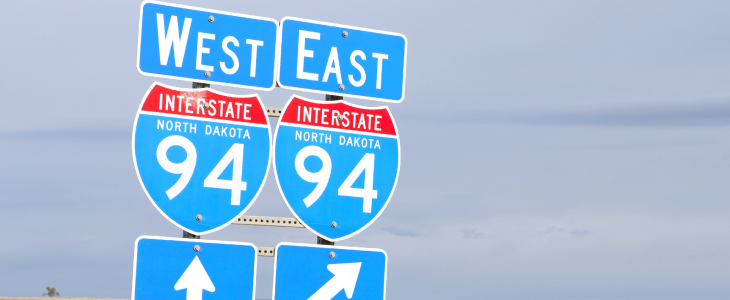Many traffic accidents happen when one driver fails to understand or respect the rules governing who has the right of way at an intersection.
Right of Way at Intersections
If you have the right of way, you have the right to go through the intersection. If another driver has the right of way, you must yield or wait your turn to go through.
Right of Way and Traffic Signals
Traffic signals regulate the right of way at many intersections. Here is how traffic signals relate to the right of way in North Dakota:
- When you have a green light, you have the right of way unless a sign indicates otherwise. However, you must yield to vehicles or pedestrians already in the intersection or an adjacent crosswalk.
- When you have a green arrow, you can proceed cautiously into the intersection to make the turn the arrow indicates.
- A yellow light is a warning that the light is about to turn red. It doesn’t prevent you from continuing through an intersection, but it means you should be cautious.
- A red light means that you do not have the right of way and must stop before the intersection. However, you may cautiously turn right unless there’s a sign indicating otherwise. You can also turn left from a one-way street onto another one-way street.
- A flashing red light has the same meaning as a stop sign. You must come to a complete stop before proceeding.
- A flashing yellow light means that you can proceed with caution.
Yield Signs
A yield sign requires you to slow down as you approach the intersection and yield to any vehicle going through the intersection. If you get in a crash at an intersection after passing a yield sign without stopping, that is considered evidence that you did not yield the right of way.
Uncontrolled Intersections
At an uncontrolled intersection with no signs or lights, you must yield the right of way to any driver to your right, and you must be prepared to yield if turning left.
Right-of-Way and Pedestrians
Pedestrians have the right of way when crossing in the crosswalk. They are not allowed to enter the crosswalk unless they have a Walk sign or a green light in intersections without a Walk sign.
Common Causes of Accidents
Common causes of accidents include:
Any of these conditions can cause you not to notice or adhere to right-of-way rules. Failure to yield right-of-way is the cause of many accidents.
Liability in Intersection Accidents
When a car accident happens, the driver who failed to yield the right of way will probably be found at fault and liable for the accident.
Compensation for Victims
North Dakota has a no-fault insurance system in which drivers are required to carry at least $30,000 of personal injury protection (PIP) insurance to cover their medical expenses and economic losses after an accident, regardless of who was at fault. Drivers must also carry bodily injury liability and property damage liability insurance, in case they are sued by another driver for losses that go beyond the amount covered by no-fault insurance. If you are injured in a car accident in North Dakota, you can receive compensation for medical expenses and lost wages from your PIP coverage. If you suffer a permanent disability, serious injury, or disfigurement that lasts more than 60 days, you can sue the at-fault driver for money for pain and suffering and loss of enjoyment of life.
Contact a North Dakota Personal Injury Lawyer Today
Pringle & Herigstad, P.C. is a North Dakota personal injury lawyer. We have been giving our North Dakota neighbors trusted legal advice since 1909. We consider it our mission to give a voice to the voiceless. For help with your personal injury case, contact Pringle & Herigstad, P.C. today.
Pringle & Herigstad, P.C. is committed to supporting individuals in North Dakota, including Grand Forks, Minot, Fargo, Bismarck, Williston, Rugby, Devils Lake, Jamestown, and the surrounding areas. Our dedicated team is here to provide legal assistance and guidance to those facing the complex challenges that arise from these incidents.
